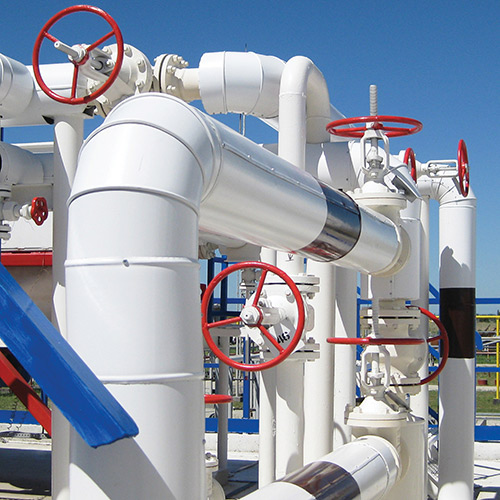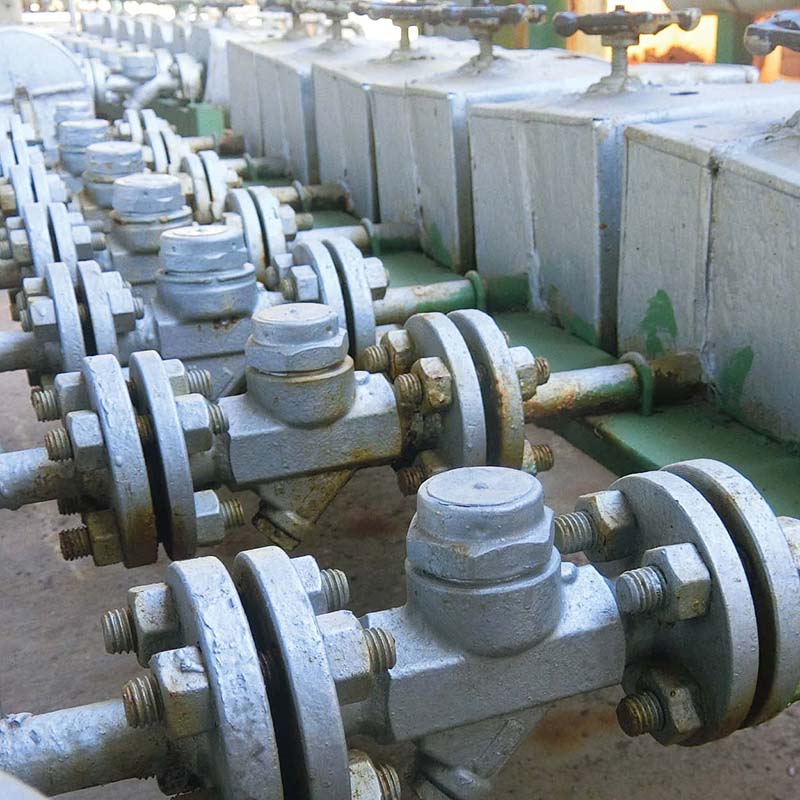
- KLINGER Australia
- Blogs
- Fugitive emissions: business risks explained
Fugitive emissions: business risks explained
Fugitive gas and/or vapour emissions can occur at any processing facility due to leaking equipment, including valves, flanges, seals, connectors and pipework. Hazardous emissions commonly occur at oil and gas producing and processing facilities, both onshore and offshore.
The types of business risks associated with fugitive emissions due to compromised component integrity include:
- Safety and operational facility risks
- OHS risks
- Operational performance risks
- Maintenance cost management risks
- Regulatory requirements and compliance risk
Let’s take a look at each of these in more detail.
Safety and operational facility risks
Any leakage of hydrocarbon to atmosphere constitutes a pollutant and a risk.
The normal ‘rule of thumb’ is that concentrations of hydrocarbon vapour in the air that exceed 5% (50,000ppmv) could cause a potentially explosive atmosphere.
Such an explosive atmosphere could arise if the leak rate of hydrocarbon from a single component were to be above the lower explosive limit (LEL) of the gas, but might also arise from much lower leak rates where the leaking hydrocarbons can accumulate in site depressions or confined spaces.
Leak risks can also occur indirectly through the internal passing of hydrocarbons into unintended process streams, such as closed flare systems, cooling water lines or drains. Eventually these volatiles are released to atmosphere, often creating risks in unexpected parts of the facility.
Regardless of the source of risk, a structured component integrity management system (CIMS) is needed to properly identify and securely manage such risks.
OHS risks
The safety and operational risks identified above are also clearly OHS (personnel) risks. However in facilities that produce or process streams that contain high-risk constituents, continued exposure to these substances also constitutes health risks that need to be minimized.
Many facilities apply more stringent leak risk management criteria to such hazardous streams to ensure that risks to people working on the site are controlled with due diligence.
Operational performance risks
Loss of hydrocarbons is an indicator of sub-optimum facility performance.
Major product losses through lack of component integrity can amount to hundreds of thousands of dollars of lost production, irrespective of the number or size of poorly performing components.
KLINGER Atmeco’s experience is that the combined product loss from most sites is substantial and the costs of finding and fixing such leaks is quickly recovered through the productivity gains that can be achieved.
Maintenance cost management risks
Without adequate leak detection and analytical tools and systems, diagnosis of integrity problems can often be misleading or faulty.
A robust component integrity management system ensures the correct component gets the correct remedial action.
Too often the lack of an adequate system, means a facility incurs unnecessary maintenance costs and production losses, further adding to risks.
Regulatory requirements and compliance risk
Depending on the type and location of the facility, i.e. whether offshore or onshore and what geographical state the facility is in, legislative safety and environmental requirements exist.
These will require formal management of leak risks, and consequent reporting of associated emissions.
These requirements could arise from safety cases, major hazard facility assessments, environmental licensing and/or federally mandated reporting such as NPI or NGERS.
Without the right component integrity management system in place, it can be difficult to identify and holistically manage the many thousands of components that are critical to the safe, efficient, and environmentally clean operation of a facility.
When it comes to fugitive emissions caused by compromised components, the operational risks can be high. Talking to an expert can get you on the right path of managing fugitive emissions due to leaking equipment or components.
KLINGER Atmeco is the leading service provider of end-to-end emission management and asset integrity assessment solutions. For 20 years we have worked in potentially hazardous facilities and have continuing contracts with long-standing local and multi-national clients in the energy, oil and gas, resource, chemical and processing sectors.
View our capabilities and some of the clients we have helped. Read more about KLINGER Atmeco and emission management.
Emission Management Solutions
Share this article on social
Read other news
Have any questions?
Get in touch with KLINGER Atmeco; the leading service provider of end to end emission management and asset integrity solutions.



